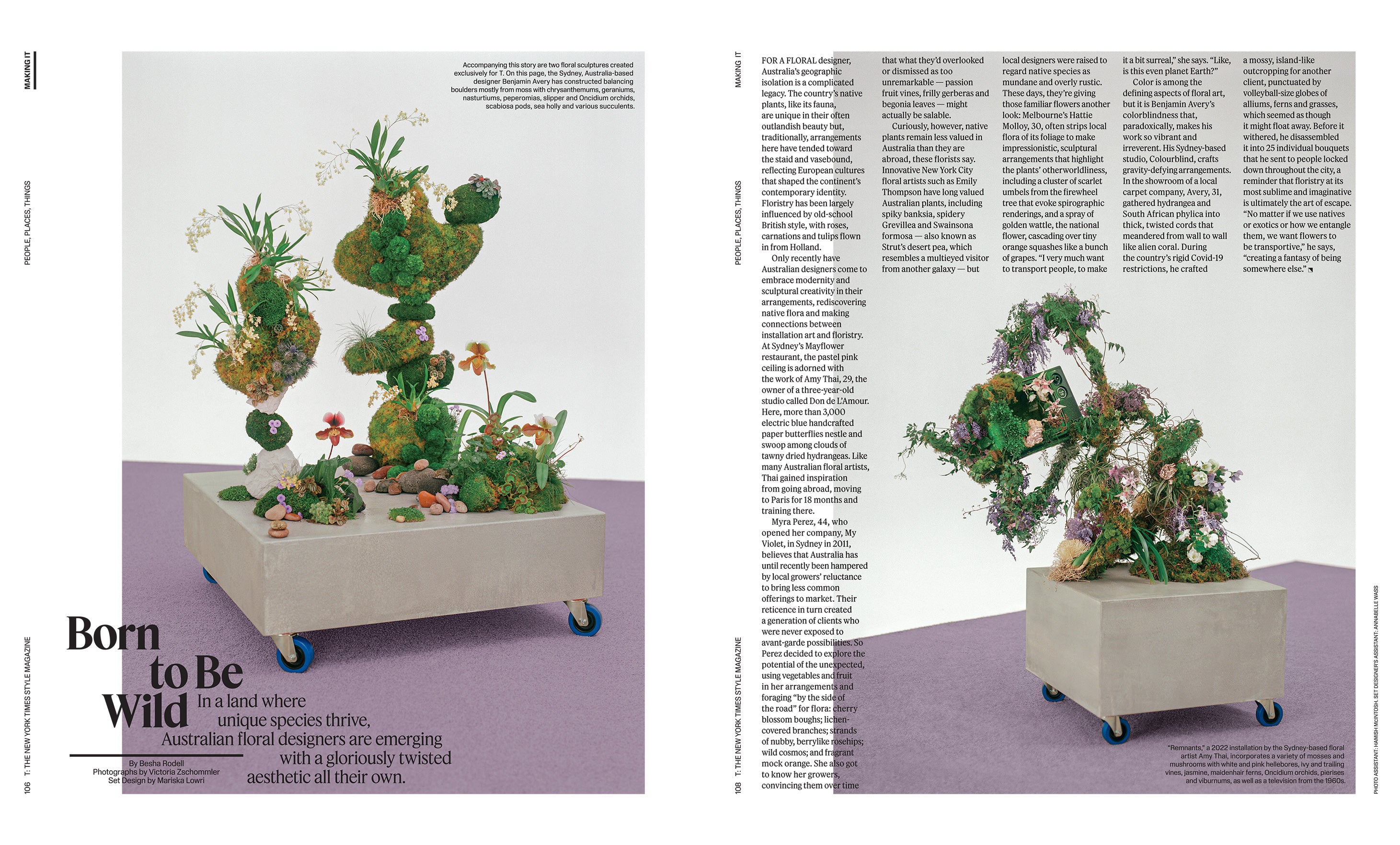Remnants, Amy Thai’s latest art installation for the New York Times T Magazine, shows how sculpture, floristry and technology are weaving both landscape and history into future vocabulary.
Read the article here.
The art piece offers a glimpse and a unique futuristic lens into a world thousands of years from today. The concept is to show the power of nature, its surroundings and how much influence it has on our global ecosystems. Nature is the heart of the world.
“With these themes at play, Remnants offers an intimate and personal reflection on nature, the environments we live in and our relationships with the spaces we occupy, live and breathe in,” describes Thai.
“It offers a moment to consider yet celebrate nature in all its guises - lands, seas, ecosystems and humankind,” Thai continues.
“My relationship with the natural world, meditations and the love of self has been incredibly weaved into the narratives I have created in my works including Remnants. These stories, the shifting tides of my life and experiences add another layer of influence into the art I create now which I hope resonates with others,”
Thai’s contemporary creative scene is often described as an interplay of organic forms and flowers inspiring emotional fluency and meditative sensory experiences. Remnants offer Thai’s travel mementos but also a lens into deep reflection on the boundaries between the real and imaginary spaces and how we perceive them. Thai explores her practice by weaving landscape, regional characters and respect for historic fabric into modern and future visual vocabulary. Her place-based approach to the built environment is captured in this commission. By allowing botanicals to hold their own against technology in the installation, it combines earthen textures and a technological statement to create a harmonious space.
The artist sought to reference moments from her life of travel and her years of discovering art, whilst staying true to the principles of French floristry. Key pieces set the tone for the installation including a 1960’s vintage television, Spanish and Forest moss and Oncidium orchids. “The idea was to enhance these organic earthen materials and layer the piece with warmth and a familiar touch,” says Thai.
The piece is constructed from a Carex ‘Feather Falls’ plant, orchids, climbing trails of Jasmine and Ivy, pink Pieris, Hellebores, fern, vines and mushrooms affixed to a swirl-like welded metal framework. In every colour from pink and periwinkle to lush green, the installation spreads, contracts and morphs into any space leaving audiences to imagine what future landscapes would look like.
The curvaceous, organic, fluid lines and curated colour palette of Remnants alongside the artist’s Parisian styled floral design hover between precision and abstraction. The artist explains that the process of bringing each piece to life was unstructured and contradictory, it allowed for her to move in an organic way leading to moments of spontaneity and unexpected results. Working with new mediums in floristry has transformed floral sculptures into new dimensions and possibilities and she encourages audiences to engage and experience her art installations in new ways, while using all the senses.
“You may observe closer, lean in close, move around it and engage with it in a way that is unique, special and different to reviewing an artwork hanging on the wall of a space,”
Remnants show the importance of objects that are considered ordinary yet lie at the heart of systems of thought and practices of their makers and users. Through Thai’s floristry, sculpture and design, she demonstrates the role of these objects in non-verbal communication and how nature is a part of this. She shows that many everyday essential objects, their physical properties and their material implementations are wordless expressions of fundamental aspects of a way of living and thinking, as well as sometimes the only means of expressing the inexpressible. Through her study of the most ordinary activities in today’s contemporary world, such as watching television or walking, she gained an understanding of what these objects mean and how they work within their cultures of origin.
Photograph by Victoria Zschommler.
Set design by Mariska Lowri

